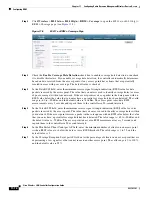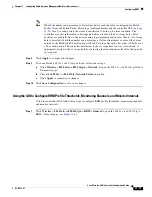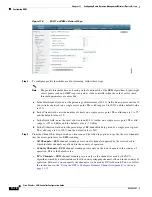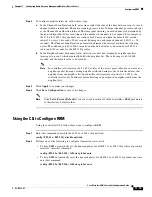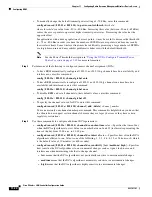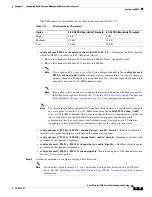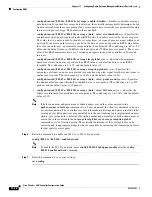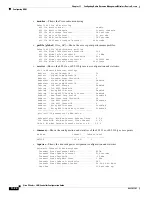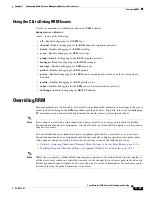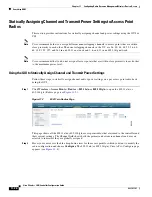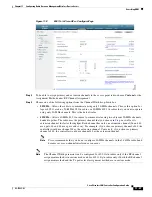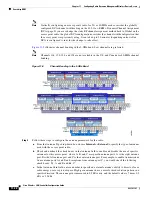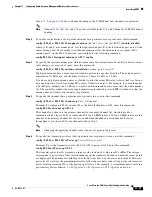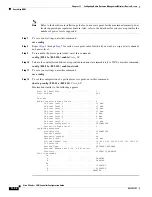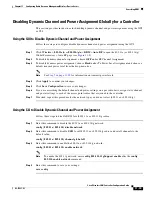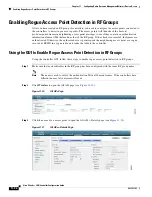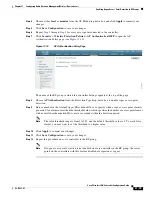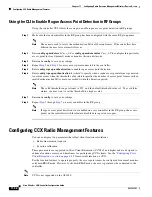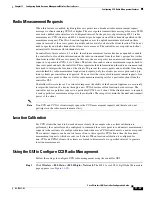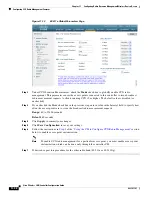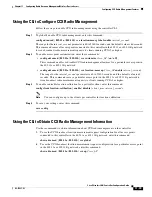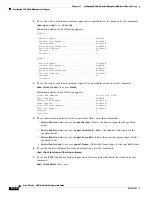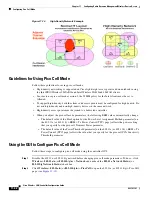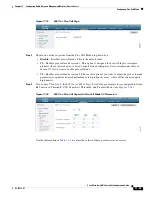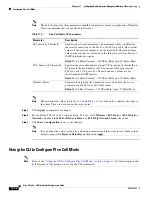
11-30
Cisco Wireless LAN Controller Configuration Guide
OL-17037-01
Chapter 11 Configuring Radio Resource ManagementWireless Device Access
Overriding RRM
Step 10
To have the controller send the access point radio admin state immediately to WCS, follow these steps:
a.
Choose
Wireless
>
802.11a/n
or
802.11b/g/n
>
Network
to open the 802.11a (or 802.11b/g) Global
Parameters page.
b.
Check the
802.11a
(or
802.11b/g
)
Network Status
check box.
c.
Click
Apply
to commit your changes.
Step 11
Click
Save Configuration
to save the changes to the access point radio.
Step 12
Repeat this procedure for each access point radio for which you want to assign a static channel and power
level.
Using the CLI to Statically Assign Channel and Transmit Power Settings
Follow these steps to statically assign channel and/or power settings on a per access point radio basis
using the CLI.
Step 1
To disable the radio of a particular access point on the 802.11a or 802.11b/g network, enter this
command:
config
{
802.11a
|
802.11b
}
disable
Cisco_AP
Step 2
To configure the channel width for a particular access point, enter this command:
config
{
802.11a
|
802.11b
}
chan_width
Cisco_AP
{
20
|
40
}
where
•
20
allows the radio to communicate using only 20-MHz channels. Choose this option for legacy
802.11a radios, 20-MHz 802.11n radios, or 40-MHz 802.11n radios that you want to operate using
only 20-MHz channels. This is the default value.
•
40
allows 40-MHz 802.11n radios to communicate using two adjacent 20-MHz channels bonded
together. The radio uses the primary channel that you choose in
as well as its extension
channel for faster throughput. Each channel has only one extension channel (36 and 40 are a pair,
44 and 48 are a pair, and so on). For example, if you choose a primary channel of 44, the controller
would use channel 48 as the extension channel. Conversely, if you choose a primary channel of 48,
the controller would use channel 44 as the extension channel.
Note
This parameter can be configured only if the primary channel is statically assigned.
Note
Cisco recommends that you do not configure 40-MHz channels in the 2.4-GHz radio band
because severe co-channel interference can occur.
Note
Statically configuring an access point’s radio for 20- or 40-MHz mode overrides the globally
configured DCA channel width setting (configured using the
config advanced 802.11a channel
dca chan-width-11n
{
20
|
40
} command). If you ever change the static configuration back to
global on the access point radio, the global DCA configuration overrides the channel width
configuration that the access point was previously using. It can take up to 30 minutes (depending
on how often DCA is configured to run) for the change to take effect.

